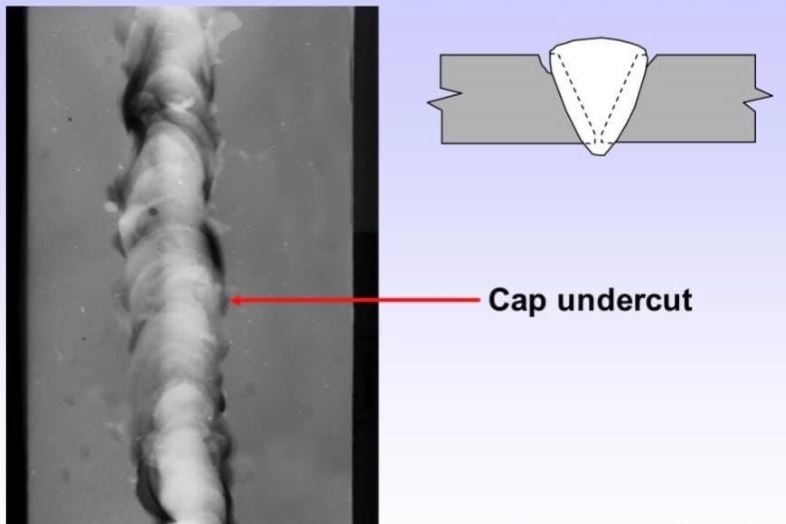Best Guide to Preventing Weld Undercut: Tips and Techniques
Best Guide to Preventing Weld Undercut: Tips and Techniques
Blog Article
Mastering the Art of Welding: Just How to Prevent Undercut Welding Issues for Flawless Fabrication Outcomes
By comprehending the origin triggers of undercut welding and applying efficient techniques to stop it, welders can raise their craft to new degrees of quality. In the quest of remarkable fabrication results, mastering the art of welding to prevent undercut issues is not simply an ability however a necessity for those striving for excellence in their job.
Recognizing Undercut Welding

To stop undercut welding, welders need to make sure appropriate welding specifications, such as readjusting the present, voltage, travel rate, and preserving the appropriate electrode angle. Furthermore, using the proper welding technique for the particular joint setup is important. Utilizing weaving motions or backstepping techniques can help make certain proper weld metal deposition and reduce the possibility of undercut formation. Normal assessment of welds during and after the welding process is likewise critical to capture any undercut early and make essential modifications to prevent more defects. Preventing weld undercut. By understanding the sources of undercut welding and applying safety nets, welders can accomplish premium, structurally sound welds.
Reasons For Undercut in Welding
Recognizing the variables that add to damage in welding is essential for welders to create premium, structurally audio welds. Undercutting happens when the weld metal does not correctly load the groove formed between the base metal and the formerly transferred weld steel. Several elements can lead to damage in welding. One usual cause is extreme warmth input. Welding at heats for extensive periods can result in the base steel melting more than wanted, resulting in damage. Inadequate welding present or wrong welding speed can also contribute to undercut. Insufficient current might not supply enough heat to thaw the base and filler metals sufficiently, while excessive speed can protect against proper blend, causing undercut. Furthermore, incorrect electrode angles or inaccurate lantern control methods can produce locations of reduced weld steel deposition, promoting undercut. Recognizing these reasons and executing proper welding techniques can help prevent damaging concerns, guaranteeing resilient and strong welds.
Methods to Stop Undercutting

To reduce the threat of damaging in welding, welders can employ critical welding methods targeted at improving the top quality and integrity of the weld joints. One reliable technique is to change the welding parameters, such as voltage, existing, and take a trip rate, to guarantee appropriate warm input and deposition. Keeping an ideal electrode angle and making certain consistent travel rate can likewise aid stop undercut. Additionally, making use of the correct welding method for the specific joint setup, such as weave or stringer beads, can add to decreasing damaging. Preventing weld undercut.
Using back-step welding methods and regulating the weld grain account can also aid distribute warm uniformly and decrease the risk of undercut. Regular examination of the weld joint during and after welding, as well as carrying out top quality guarantee measures, can assist in resolving and detecting undercutting issues immediately.
Relevance of Appropriate Welding Specifications
Picking and preserving suitable welding criteria is important for accomplishing successful welds with minimal flaws. Welding criteria describe variables such as voltage, current, travel rate, electrode angle, and shielding gas circulation price that straight influence the welding process. These criteria should be carefully changed based on the sort of product being welded, why not try this out its density, and the welding strategy used.
Proper welding parameters make certain the check that correct amount of warmth is used to thaw the base steels and filler material uniformly. If the criteria are established too expensive, it can bring about too much heat input, causing burn-through, spatter, or distortion. On the other hand, if the parameters are too low, insufficient combination, absence of infiltration, or damaging may happen.
Quality Control in Welding Operations

Conclusion
In verdict, mastering the art of welding needs a thorough understanding of undercut welding, its causes, and methods to stop it. By ensuring proper welding criteria and applying quality guarantee techniques, flawless construction outcomes can be attained. It is crucial for welders to regularly make every effort for excellence in their welding operations to have a peek here avoid undercut problems and create top quality welds.
Undercut welding, a typical problem in welding processes, happens when the weld metal doesn't properly fill up the groove and leaves a groove or anxiety along the bonded joint.To avoid undercut welding, welders must guarantee appropriate welding parameters, such as adjusting the current, voltage, traveling rate, and maintaining the proper electrode angle. Inadequate welding inaccurate or present welding speed can likewise add to damage.To alleviate the risk of undercutting in welding, welders can use tactical welding techniques aimed at boosting the top quality and honesty of the weld joints.In conclusion, understanding the art of welding calls for an extensive understanding of undercut welding, its causes, and strategies to avoid it.
Report this page